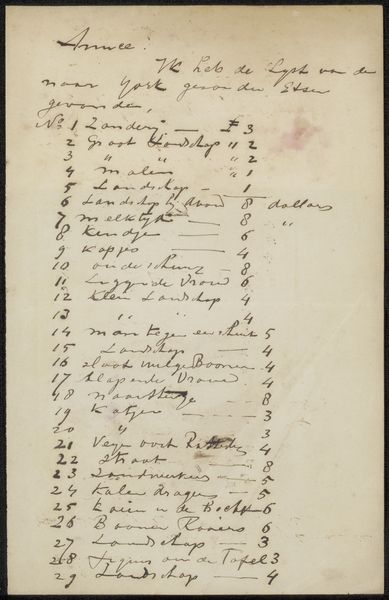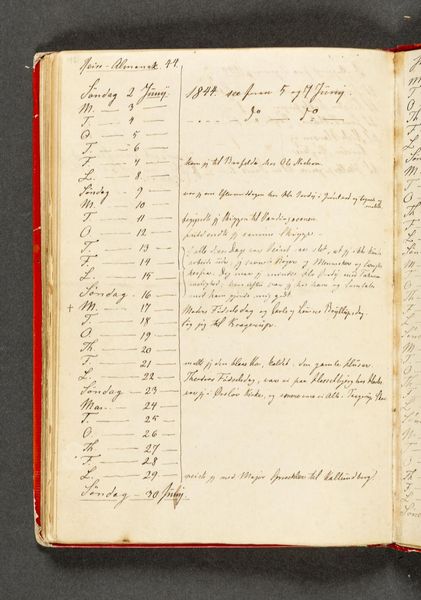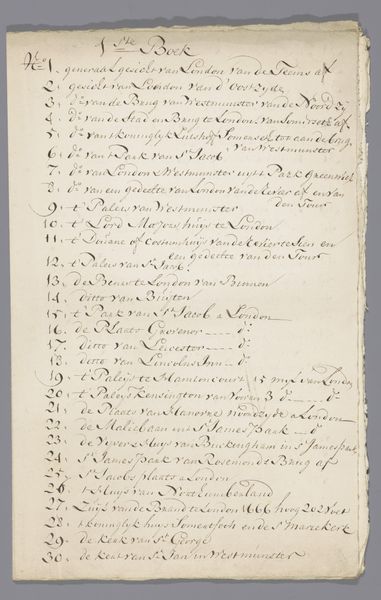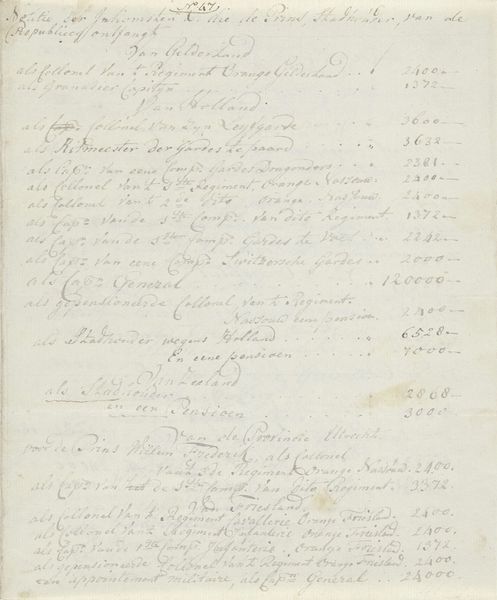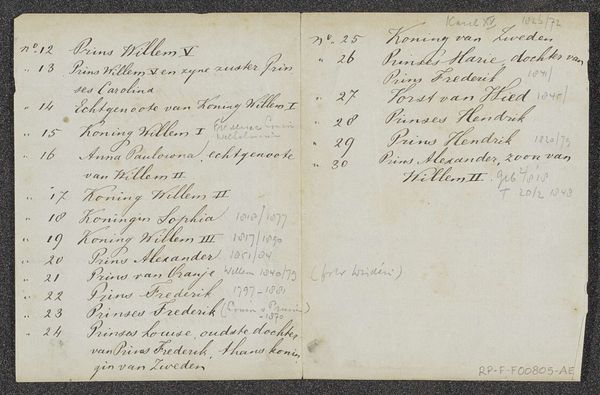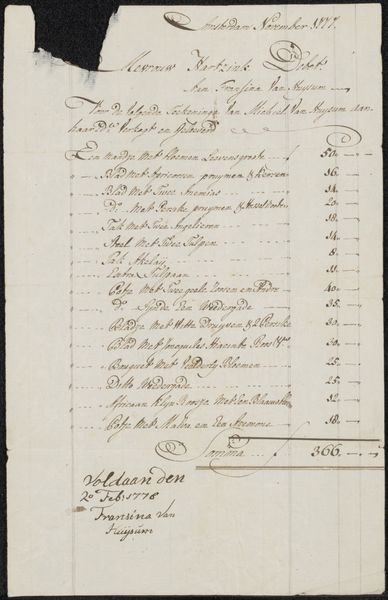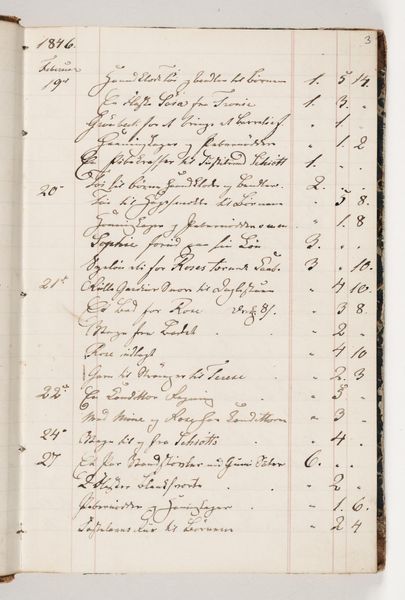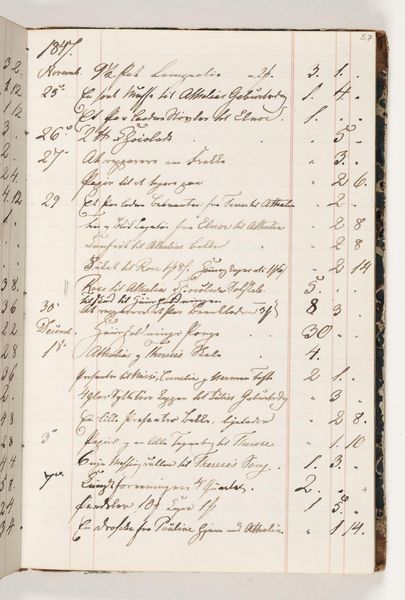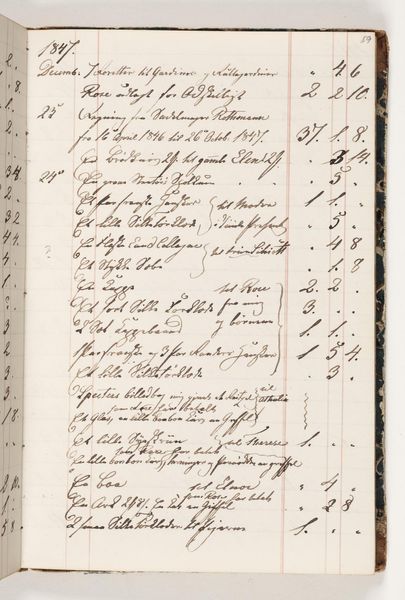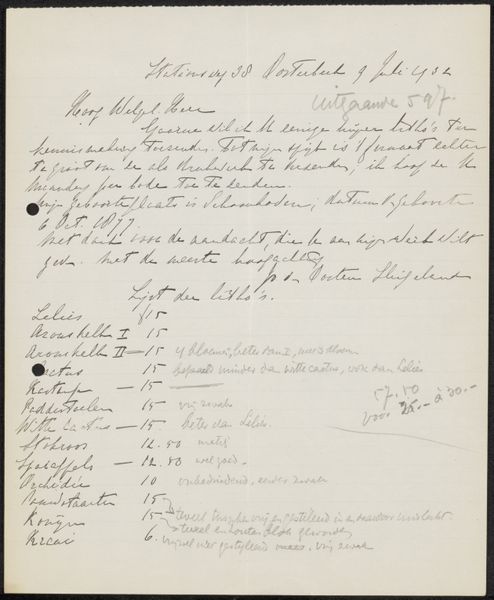
drawing, paper, ink, pen
#
drawing
#
aged paper
#
dutch-golden-age
#
paper
#
ink
#
pen work
#
pen
#
calligraphy
#
monochrome
Copyright: Rijks Museum: Open Domain
Curator: This intriguing sheet, titled "Aantekening betreffende jonkheer J.F.L. Coenen van 's Gravesloot," is a drawing made with pen and ink on paper. It’s thought to date back to 1865. Editor: It looks like a ledger page, something very functional and utilitarian. The dense text and monochrome palette give it a rather serious, almost somber, tone. The tight columns seem very disciplined. Curator: Indeed, but let's think about the production of such a document. This wasn’t just scribbled down. Consider the paper itself – its preparation, the source of the ink, even the handwriting skills involved. Each entry likely represents someone’s labor and contribution. Who was Jonkheer Coenen van 's Gravesloot and what role did he have within this network? This 'note' illuminates those social and economic dynamics. Editor: While context is valuable, let’s focus on the visual form. The elegant calligraphy creates these repetitive vertical lines of script; then there are numbers that act almost as abstract design elements breaking that verticality with a contrasting diagonal thrust... The composition, though seemingly simple, displays such intricate rhythms of line and shape. Curator: But isn’t that ‘elegance’ disguising the actual material conditions of its making? These repetitive lines are also repetitive tasks; perhaps evidence of tedious, underpaid work. The beauty you see is contingent on those obscured realities. This note becomes a site of intersecting social relations. Editor: I see it more as a demonstration of restraint and control. How the artist was able to construct such visual texture with such minimal means and visual elements! Even in something functional, there’s clearly a visual system at work. Curator: Perhaps both. It's about recognising the tension between its aesthetic qualities and the network of production relations from which it arises. Editor: Right. The act of closely observing those interactions in both formal elements and in how the material shapes understanding. Thank you.
Comments
No comments
Be the first to comment and join the conversation on the ultimate creative platform.
